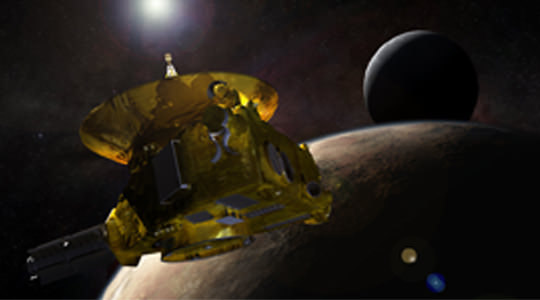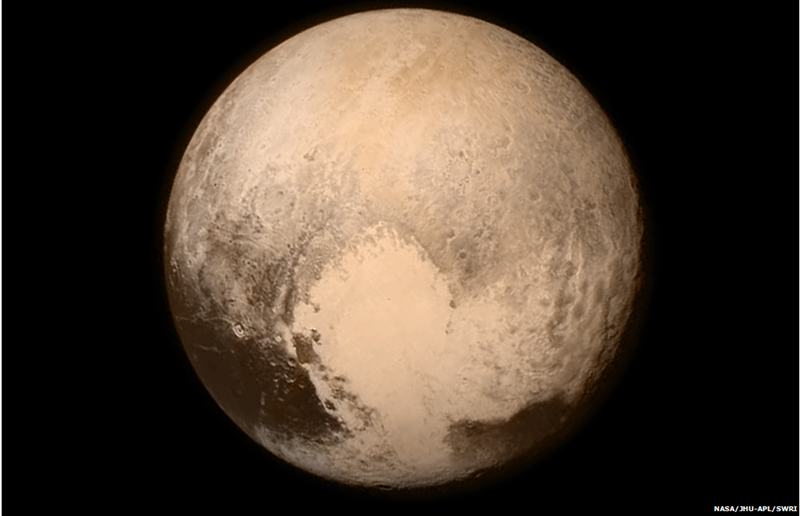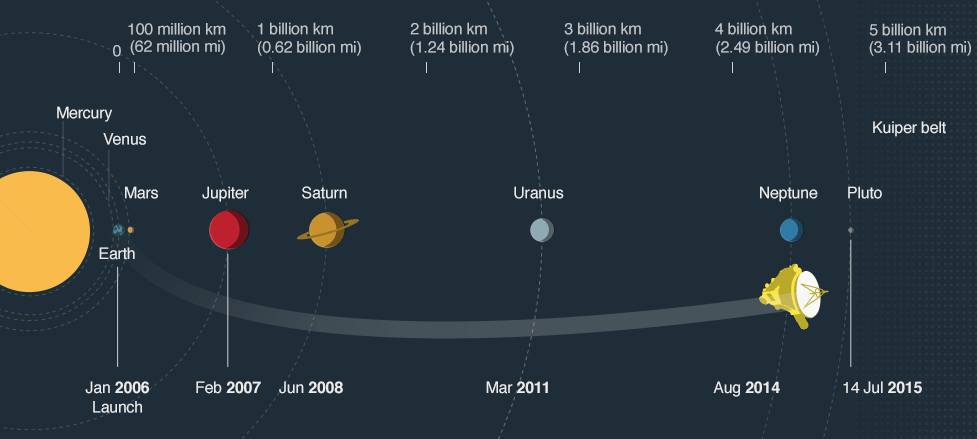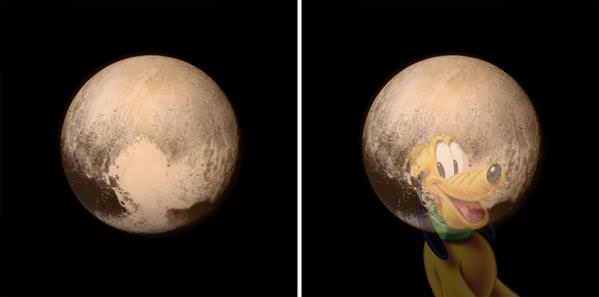News
New Horizons completes its epic odyssey to Pluto
“Space: The final frontier.
These are the voyages of the Starship, Enterprise,
Its 5 year mission,
To explore strange new worlds,
To seek out new life and new civilizations,
To boldly go where no man has gone before”
These are the famous lines from the iconic monologue spoken out during the first opening sequence of the Star Trek TV series but today they hold a whole new meaning altogether – a reflection of the transformation of science fiction to reality.
After a historic journey that lasted almost a decade, NASA’s space probe New Horizons has made the first visit to Pluto, speeding past the dwarf planet at 14 kilometers per second. This marks the closest planned approach to the enigmatic celestial body with the craft speeding over the planet, just 7,750 miles above the surface. At such a close distance, NASA is expecting very high quality images and data.
As the craft made its way towards its final destination, cheers and flags exploded in the NASA mission control room as scientists celebrated the dramatic flyby of Pluto – considered as the last unexplored body in the known solar system. This also marks as a historic achievement by the US as now it is the only country to have explored all the official planets in the solar system.
New Horizons blasted off in January 2006, carrying the ashes of Clyde Tombaugh, the astronomer who discovered Pluto in 1930. Several months later, astronomers at the International Astronomical Union voted to change the definition of the word “planet”, a move that downgraded Pluto to the more diminutive “dwarf planet”. The flyby may resurrect the debate and see Pluto restored to full planetary status.
“It feels good,” said Alan Stern, lead scientist on the mission. “So many people put so much work into this around the country. We’ve completed the initial reconnaissance of the solar system, an endeavour started under President Kennedy.”
John Grunsfeld, head of Nasa’s science mission directorate, said that images beamed back from New Horizons on its approach showed Pluto to be an “extraordinarily interesting and complex world”.
“It’s just amazing. It’s truly a hallmark in human history,” he said of the encounter with Pluto. “It’s been an incredible voyage.”
We now finally have the first coloured images of Pluto and NASA is currently waiting for more detailed pictures of the surface in the next 24 hours – the distance itself taking the toll on the time of data transfer. NASA has also tied up with Instagram to populate these pictures on social media.
At such a great distance, direct control from the ground is impossible, because radio signals take more than nine hours to travel to the spacecraft and back again. It will take 16 months to beam all of New Horizon’s data back to Earth. This places the craft at a very fragile position as 99% of the data is still stored in the storage of the probe itself.
The journey of New Horizons does not end here. It is expected to continue its voyage to the very edge of the solar system – a place called the Kuiper Belt. Running on a nuclear generator that works on the aptly named plutonium, the craft is expected to function till the 2030s when it will be more than 100 times further away than the Earth is from the sun.
To add on to the celebrations, the online community didn’t wait to add its own flavor to this world changing event.
With plans of a manned mission to Mars under way, the future looks bright with mankind venturing out to deeper reaches of space to explore unknown and mysterious worlds, some even having the possibility of hosting intelligence life forms. Will the turning point of science fiction turning into reality come sooner than expected?














































